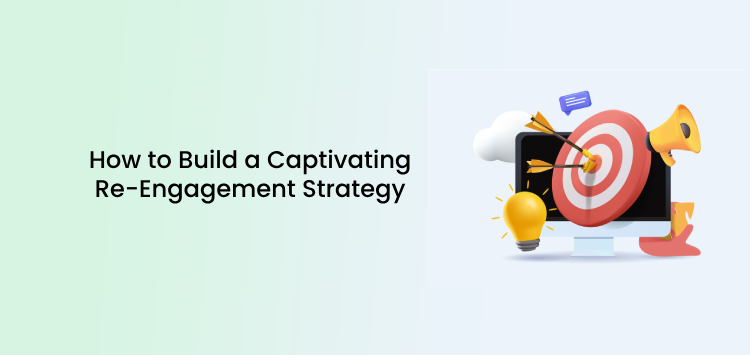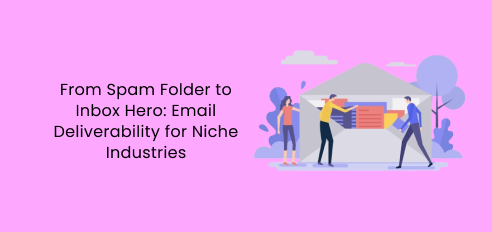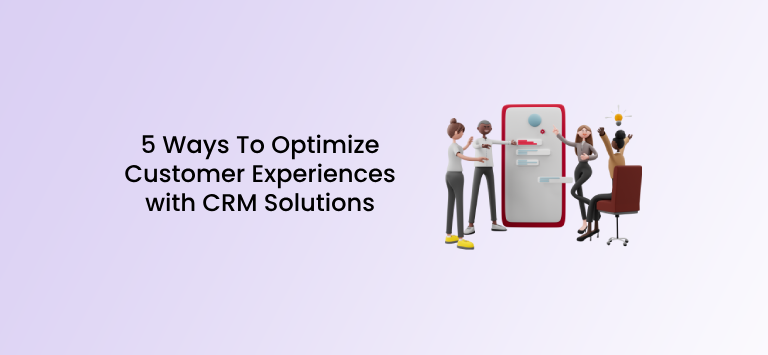All business involves a certain degree of risk.
A major part of that is figuring out who’s going to be buying your products. Even someone who looks like a perfect fit might not be interested, or might not have the means to make any purchases at the time when you come across them.
But what if there was a way to specifically market towards people who had already proven to you that they’re willing and able to buy your products?
That’s where a strong re-engagement strategy shines.
By emphasizing the importance of nurturing leads that have already been paying customers, you can guarantee that you’re speaking to an interested crowd. This helps you boost sales, increase engagement, and drive customer lifetime value up.
In this guide, we’re going to show you exactly how you can set about crafting the perfect re-engagement strategy.
Part 1: Plan Your Strategy
Implementing new and cutting-edge strategies should always begin with brainstorming and careful planning. This lets you ensure you’re heading in the right direction, and that you’ve planned for every eventuality. It also helps you stay prepared when things don’t go as expected.
The two questions below will guide you towards improved planning for your re-engagement plans.
What Do You Want to Achieve?
Be as clear as you can be when it comes to determining what your goals are going to look like. Ideally, you should use an established model like the SMART goal framework to make sure you’re setting your re-engagement strategy up for success.

Image sourced from indeed.com
Maybe you’re looking to increase your sales sustainably, and you know that re-engagement is the key to making this happen. Or maybe your aim is to boost customer lifetime value and ensure that everyone you count as a client or customer brings amazing value to your company.
Whatever the case, you should always align your re-engagement strategy closely with your goals to make it as strong as possible.
Which Groups Are You Targeting?
A major part of creating the best possible re-engagement strategy is knowing who you’re marketing to, then adjusting your plan accordingly.
For example, let’s say you’ve got a conversational AI for sales team product that you’re looking to bring to customers. You wouldn’t reach out to customers who aren’t part of a sales team, because they wouldn’t be part of your target demographic. On the other hand, you would highlight the benefit your AI offers to customers who work as sales reps, because they do fit into that category and would be much more inclined to engage with this kind of product.
Part 2: The Power of Re-Engagement Emails
Despite being around for decades, emails are still a hugely popular marketing tool today. In fact, for most people, emails are the first thing to check each day:

Image sourced from optinmonster.com
This tells us that emails have a lot of power when it comes to reaching out to customers and drawing them back in. But how can you harness that power and use it to your advantage?
The following kinds of emails are particularly effective in this regard. They’ll help you improve your re-engagement strategy and lure customers back for just one more item, over and over.
Birthday Emails
To re-engage customers, you’ll want to remind them that you care about them. This lets them know that you value them as unique individuals and that you’re not just contacting them out of obligation, but because you genuinely want to form a better bond.
That’s why birthday emails are so brilliant.
They let you celebrate with your customers, which necessarily involves giving them that individual recognition they need to feel seen. Birthday emails also represent a great opportunity to offer your customers a unique discount or referral code, which acts as an incentive for them to treat themselves.
Promotional Emails
From limited-time discounts to online giveaways, promotional emails are a highly useful tool for re-engaging customers.
These emails let customers feel they’re getting a good deal when they shop with you. They also remind customers why they gave you their email address and/or agreed to be added to an email list, ensuring they see value in your company.
Plus, if they’re super happy after using a promotional code from one of these emails, they’re more likely to re-engage again at a later date after your initial re-engagement campaign. That means even better lifetime value.

Image sourced from storydoc.com
Email Newsletters
Part of the magic of email marketing is that when you do it right, it doesn’t even feel like marketing half the time. For example, when your customers read your email newsletters, they should come away feeling like they’ve learned something new rather than clicked on an ad.
At the same time, your newsletter should get existing customers excited about current or upcoming products.
Your newsletters are the perfect space to explore the advantages of your products in a non-hard sales way. That means showing off what your new items or services can do without turning it into a sales pitch – you’re explaining, not advertising.
Part 3: The Potential of Social Media
Well-crafted emails and catchy subject lines are just one part of an excellent re-engagement strategy. You should always seek to branch out and connect with your customers across platforms, including social media.
To give some perspective on the enormous potential of social media websites, there are currently almost 5 billion users across social media platforms. When you include social media in your strategy, you’re giving yourself a chance to reach that huge (and hugely varied) demographic.

Image sourced from atonce.com
Meeting Customers Where They Are
In the same way that a cloud phone system helps you connect with customers via voice calls, social media platforms let you forge connections with your client base in virtual spaces.
As mentioned above, many people are already on social media. They’re able to relax, chat, and even shop on most platforms, so why not join them there and make it easier than ever for them to connect with your brand?
Re-engaging with customers via social media means asking them to stay right where they are, and doing all the work of meeting them there yourself. That saves them effort and lets them know you care.
For even greater impact, consider weaving eCommerce ads into your social media strategy. Leverage the dynamic nature of social media by incorporating visually appealing ads showcasing your latest products, limited-time offers, or personalized recommendations into your posts. This approach not only captures users’ attention but also provides a convenient way for them to explore and purchase directly from their favorite social platforms.
Integrating a live chat feature on your website can further enhance this social media interaction by providing real-time assistance and support to potential customers browsing your products or services. This allows for seamless communication and engagement, ultimately increasing the likelihood of re-engaging customers who may have inquiries or need assistance during their browsing journey.
Social Media As Social Proof
Another powerful re-engagement tool is social proof, which is all about showing how much past customers loved your products. Think including a highlight reel of your best reviews on your website, for example.
Or, as it happens, simply let your social media accounts speak for themselves.
If customers click on your Twitter profile and see lots of positive comments left by people who were super happy with your products, they’ll be more likely to remember feeling the same way. This then drives them to make another purchase, which means you’ll have successfully re-engaged them.
Part 4: Using Data
Lastly, we’re going to cover the basics of why it’s so important to use data for commercial success, including as part of your re-engagement strategy.
Data and analytics are growing in popularity, and fast. What was already a multi-billion dollar industry in 2019 is only becoming more popular, which serves as a testament to its transformative power.

Image sourced from businessarticles.blogspot.com
After all, gathering and using data lets you make sense of information that exists either way. You can choose to do nothing with it, or you can use that wealth of information to improve all your internal processes, including re-engagement plans.
Analytics
Having access to loads of data is great, but it can’t ultimately get you the re-engagement you’re looking for on its own. That’s why analytics are so important.
We’ll explain using an example.
Let’s say you’re starting to use call center analytics to optimize your contact centers and find ways to improve the service they offer. Your analytics tell you that while customers are overwhelmingly happy with the support they get, many hang up before they ever speak to an agent due to long waiting times.
This would then tell you to implement solutions that help you cut that queue time down, such as a callback service that lets customers go about their day normally and then receive a call when someone is available to help.
You can use the same principle in your re-engagement strategy. Just as you were looking at those specific call center trends regarding abandoned calls, by using analytics you can figure out what’s drawing customers back, and what kinds of customers are not making repeat purchases. You’ll then be able to direct your efforts strategically.
Data-Driven Decisions
In a similar vein, you’ll want to use data to help you make choices that are based on facts, not feelings. This lets you keep personal bias to a minimum and engage with customers in good faith, simply by trusting the facts.
Making choices based on facts and information also helps you give your customers strong, objective reasons why you’re the best choice.
You can explain, for example, why the .sg domain price you offer is a great choice for Singapore-based businesses, instead of simply insisting it’s ‘good value’. This shows customers that you’re knowledgeable about your own products and industry, which fosters trust. They’ll then be more likely to re-engage with your company.
Key Points to Remember
While it’s always going to take work to bring more customers in, you can use all the resources at your disposal to make it easier, including re-engaging the people who already count themselves as your customers.
By reconnecting with existing customers, you can help your business thrive. You can also forge strong connections between your brand and the people who love it.
This drives up customer lifetime value, while improving your return on investment rates. So, in short, it’s a sure way to optimize the way your business runs, which is why it’s so crucial to adopt a strong re-engagement strategy.









